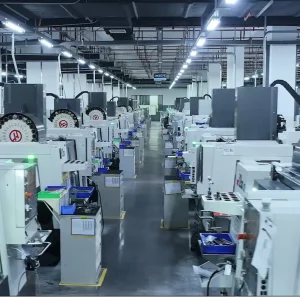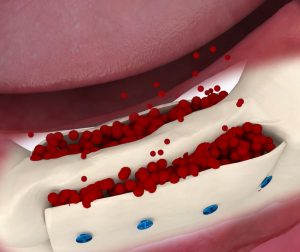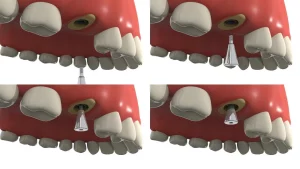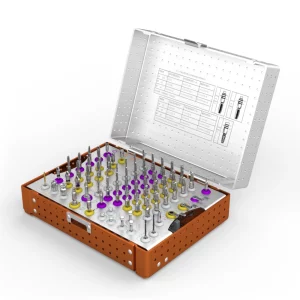Dental plaque is a stubborn bacterial biofilm that adheres to the surfaces of teeth, in between teeth, and along the gum line. This biofilm consists of countless bacteria, food particles, saliva, and other oral microorganisms. While it may not be visible to the naked eye, its long-term accumulation can pose a serious threat to oral health, leading not only to cavities and gum disease but also to issues like bad breath and periodontal abscesses. In severe cases, it can even affect overall health. Therefore, regularly removing dental plaque and maintaining oral hygiene are essential measures for preserving oral health and preventing dental diseases. In dental clinics, professionals are equipped with various specialized instruments to efficiently and precisely remove patients’ dental plaque.
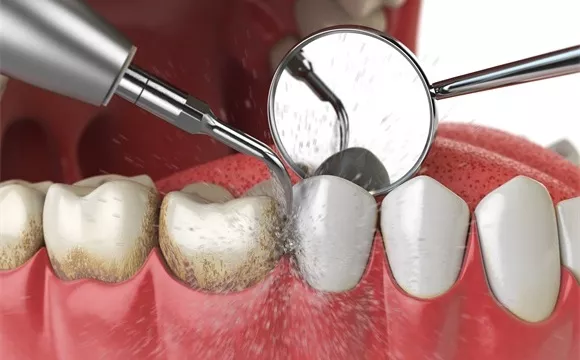
Dental Plaque Removal Instrument
Dental plaque is a stubborn bacterial biofilm that adheres to the surfaces of teeth, in between teeth, and along the gum line. If not removed promptly, it can lead to serious oral health issues. Here are some commonly used dental instruments for effectively removing plaque and tartar.
1. Ultrasonic Scaler
Function: An ultrasonic scaler is a dental instrument that utilizes high-frequency sound waves to generate a mist of water. It works by vibrating at high frequencies to break apart the plaque and tartar on the surface of the teeth, which is then rinsed away by the water mist. This cleaning method is efficient and can reach into tight spaces between teeth and below the gum line, effectively removing hard-to-reach plaque and tartar.
Ventajas:
- Speed and Efficiency: Ultrasonic scalers can clean large areas of tooth surface in a short amount of time, making them ideal for patients who need a significant amount of plaque and tartar removed quickly.
- Reduced Discomfort: Compared to manual cleaning tools, ultrasonic scalers cause less irritation to the gums. The water mist produced by high-frequency vibrations gently acts on the teeth and gums, reducing friction and damage. Additionally, the rinsing action of the mist alleviates discomfort during the cleaning process.
2. Manual Scaling Instruments
Function: Manual scaling instruments include various tools such as curettes and explorers, which are used by dentists to precisely remove plaque and tartar from the surfaces of the teeth. Their design allows dentists to access difficult areas, such as between teeth and along the gum line, effectively keeping the mouth clean and hygienic.
Ventajas:
- Precise Control: Dentists can adjust pressure and angles based on the patient’s specific dental anatomy and the distribution of plaque, ensuring optimal cleaning results.
- Versatile Application: Manual scalers can be used for different patient needs and various areas of the mouth. Whether for front teeth, back teeth, or hard-to-reach wisdom teeth, manual instruments ensure thorough cleaning in every corner.
- Minimized Damage: Compared to some electric cleaning devices, manual scalers are gentler and cause less harm to the teeth and gums, which is particularly important for sensitive teeth or delicate gums.
- Easy Maintenance: Manual instruments are straightforward to clean and maintain. Dentists can easily sterilize them after each use to ensure hygiene and safety for future treatments.
3. Air-Powered Scaler
Function: An air-powered scaler is an advanced dental instrument that uses air pressure converted to frequency, combined with water flow, to deeply clean the surfaces of teeth and interdental spaces. It effectively removes plaque, tartar, and calculus while improving the oral environment to prevent and treat dental diseases. Its elliptical cleaning pattern also massages the gums, promoting gum health.
Ventajas:
- Non-invasive: The operation of an air-powered scaler is relatively gentle, causing minimal damage to teeth and gums, making it suitable for patients with varying degrees of gingivitis and periodontitis. Its low-frequency vibrations and adjustable amplitude enhance patient comfort during the cleaning process.
- Effective Cleaning: This tool can deeply clean both tooth surfaces and between teeth, ensuring thorough removal of hard-to-reach plaque and tartar.
- Personalized Treatment: Equipped with various probe shapes and sizes, dentists can select the most suitable tool for each patient, enabling tailored treatment that enhances effectiveness.
- Disease Prevention: Regular use of air-powered scalers can effectively prevent the accumulation of plaque and tartar, reducing the risk of cavities and periodontal diseases.
4. Dental Probe
Function: A dental probe is a fine dental tool designed to access tight spaces, such as between teeth, along the gum line, and in the tiny indentations of tooth surfaces. It is primarily used to examine the subtle conditions of teeth and periodontal tissues. By gently probing, dental probes can detect potential plaque, cavities, tartar, the depth of periodontal pockets, and tooth sensitivity, providing dentists with accurate diagnostic information.
Ventajas:
- Early Detection: Dental probes can sensitively detect minute changes on tooth surfaces, allowing dentists to identify and address issues at an early stage, thus preventing further complications.
- Precise Assessment: Due to its slender tip, a dental probe can accurately evaluate the health of periodontal tissues, including gum attachment levels, pocket depths, and inflammation, providing important information for personalized treatment plans.
- Non-invasive: Compared to other potentially invasive examination methods, the use of dental probes is safer and painless, reducing patient anxiety and discomfort.
5. Electric Toothbrush
Function: An electric toothbrush is a modern oral hygiene tool that uses an internal motor to rotate or vibrate the brush head, effectively removing plaque and food particles from tooth surfaces. While primarily used for home care, electric toothbrushes are also widely used in dental offices to assist patients in maintaining effective self-cleaning, especially after professional cleanings.
Ventajas:
- Effective Cleaning: The rotating or vibrating brush head can access tight spaces and gum lines, effectively removing difficult-to-reach plaque compared to manual toothbrushes.
- User-Friendly: Electric toothbrushes are designed with different patient needs in mind, featuring multiple brushing modes, non-slip handles, and timers, making them suitable for various users, particularly those who find manual cleaning challenging.
- Promotes Oral Health: Long-term use of electric toothbrushes can significantly improve oral health by reducing plaque and tartar buildup, lowering the risk of cavities and periodontal diseases. They also massage the gums, promoting healthy blood circulation and gum stability.
The Importance of Regular Teeth Cleaning
Regular dental cleanings are an indispensable part of maintaining oral health. Dental plaque is a layer of bacterial biofilm that adheres to the surfaces of teeth. If not removed over time, it gradually hardens into tartar, which can irritate the gums and lead to oral diseases such as gingivitis and periodontitis. Additionally, dental plaque is one of the primary causes of cavities, as it destroys the hard tissues of the teeth, resulting in tooth decay.
Therefore, regular teeth cleaning plays a crucial role in preventing oral diseases. Through professional cleaning treatments, dental plaque and tartar on the surface of the teeth can be effectively removed, reducing bacterial growth and lowering the risk of oral diseases. Additionally, cleaning promotes blood circulation in the gums, enhances the gums’ resistance, and helps maintain the health and stability of the gums.
It is recommended to visit a dental clinic for a professional cleaning every six months. This is because, over time, dental plaque and tartar continuously accumulate, making it difficult to completely remove them with daily brushing alone. Professional cleaning treatments can thoroughly eliminate these hard-to-reach dental plaque and tartar, providing strong protection for oral health.
Moreover, regular cleaning treatments help dentists promptly identify and address potential oral issues, such as cavities and periodontal diseases. Early intervention and treatment can prevent the worsening of conditions, reducing the complexity and cost of treatments.
Conclusión
Removing dental plaque is an essential step in maintaining oral health. The accumulation of dental plaque not only leads to cavities and gingivitis but can also affect overall oral health and quality of life. To effectively eliminate dental plaque, dental professionals employ a range of advanced tools and technologies, including ultrasonic cleaners, pneumatic cleaners, dental probes, and electric toothbrushes.
These instruments each have unique features and functions, but they all share the common goal of efficiently and precisely removing dental plaque and tartar from tooth surfaces. Understanding the functions and benefits of these tools can help patients better grasp the dental treatment process and increase their awareness and importance of oral health.
However, relying solely on professional dental treatment is not enough. Patients also need to develop good oral hygiene habits, including regular brushing, using dental floss, and rinsing with mouthwash, as well as scheduling regular dental check-ups and cleanings. Only by combining regular cleanings with good oral hygiene practices can we effectively prevent dental and gum issues, maintain oral health, and enhance quality of life.
Therefore, we should recognize the importance of removing dental plaque, actively cooperate with dental treatments, and strengthen our self-management of oral health. Only in this way can we enjoy healthy, beautiful teeth and a better quality of life.

